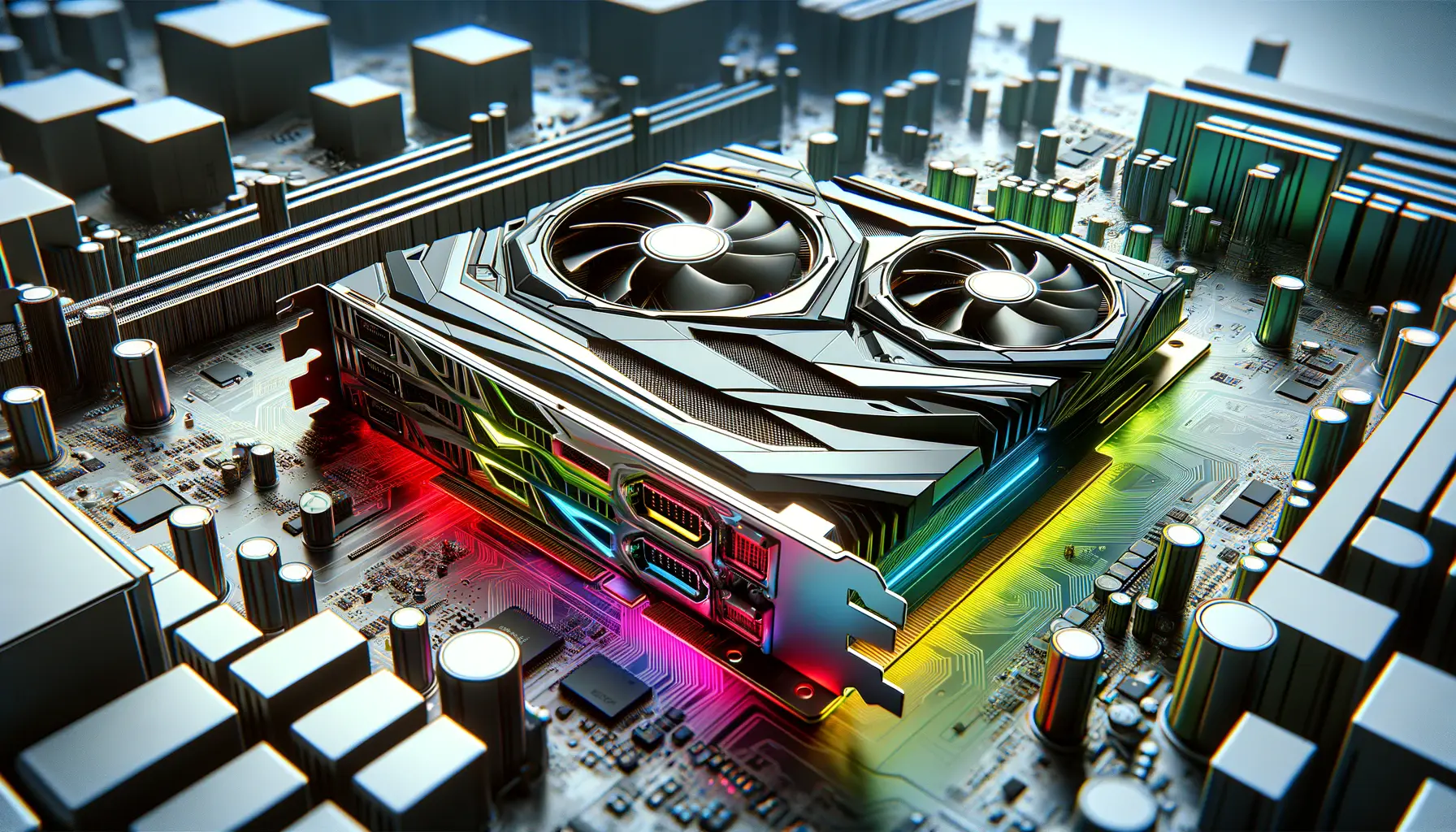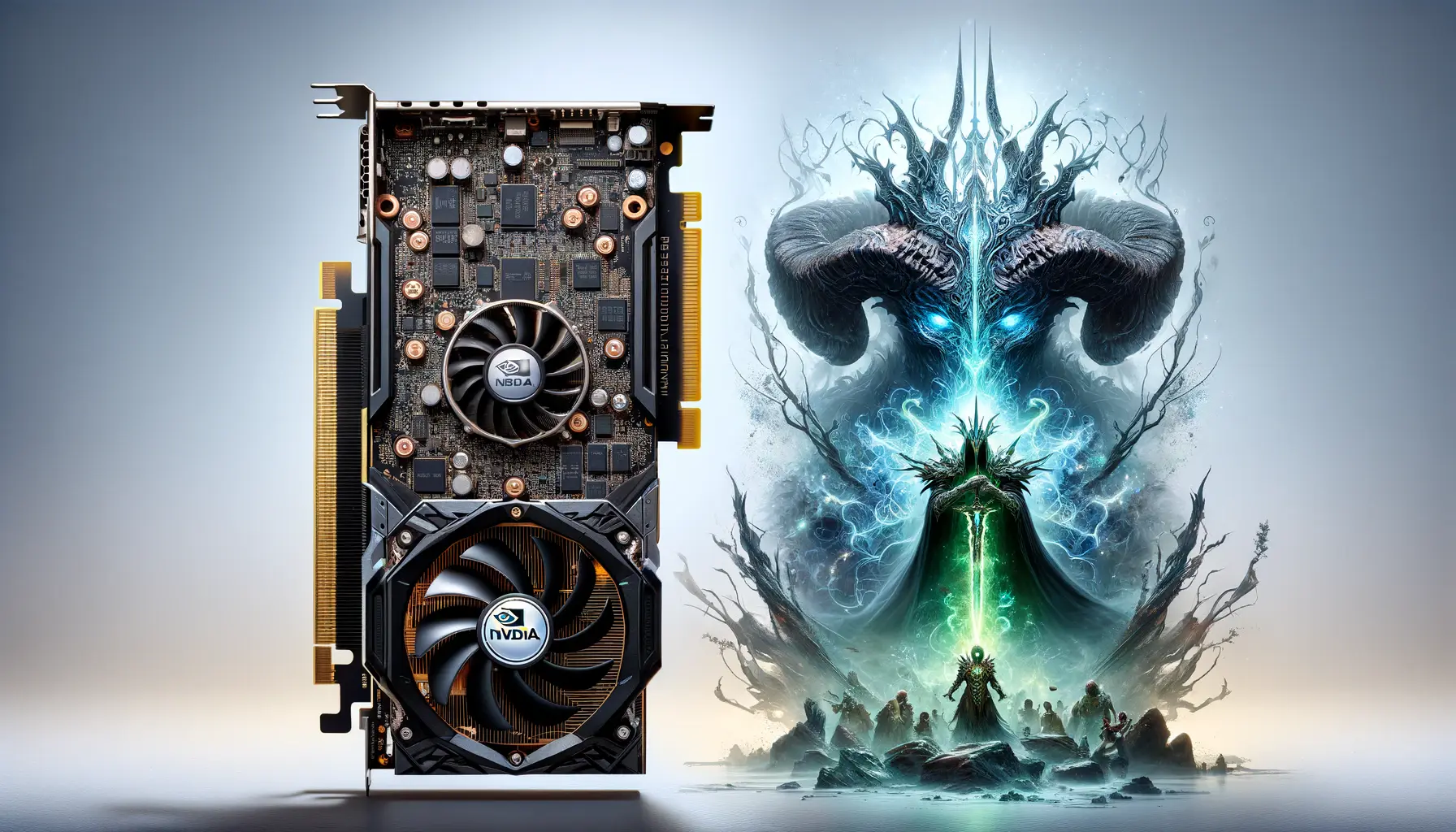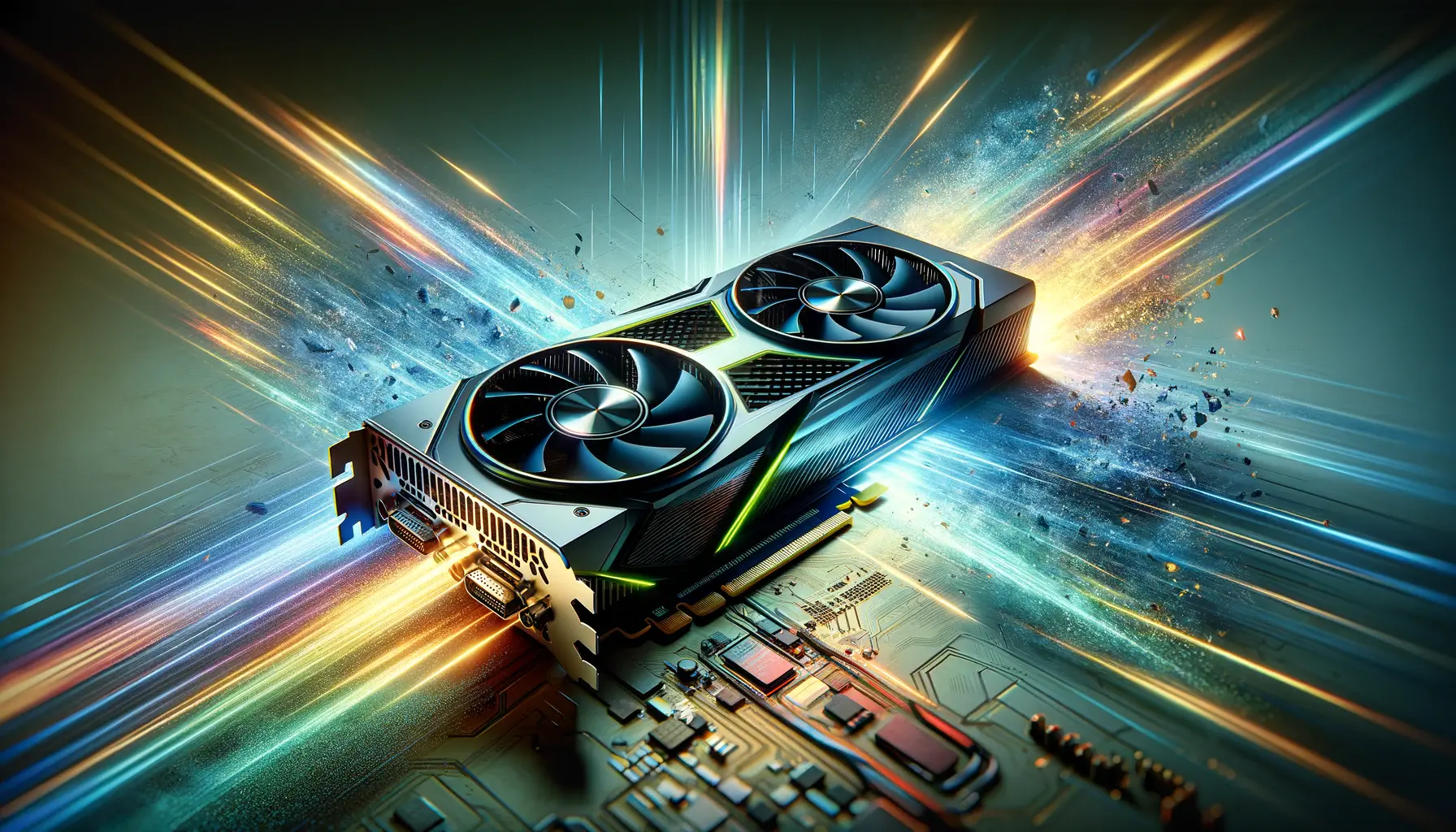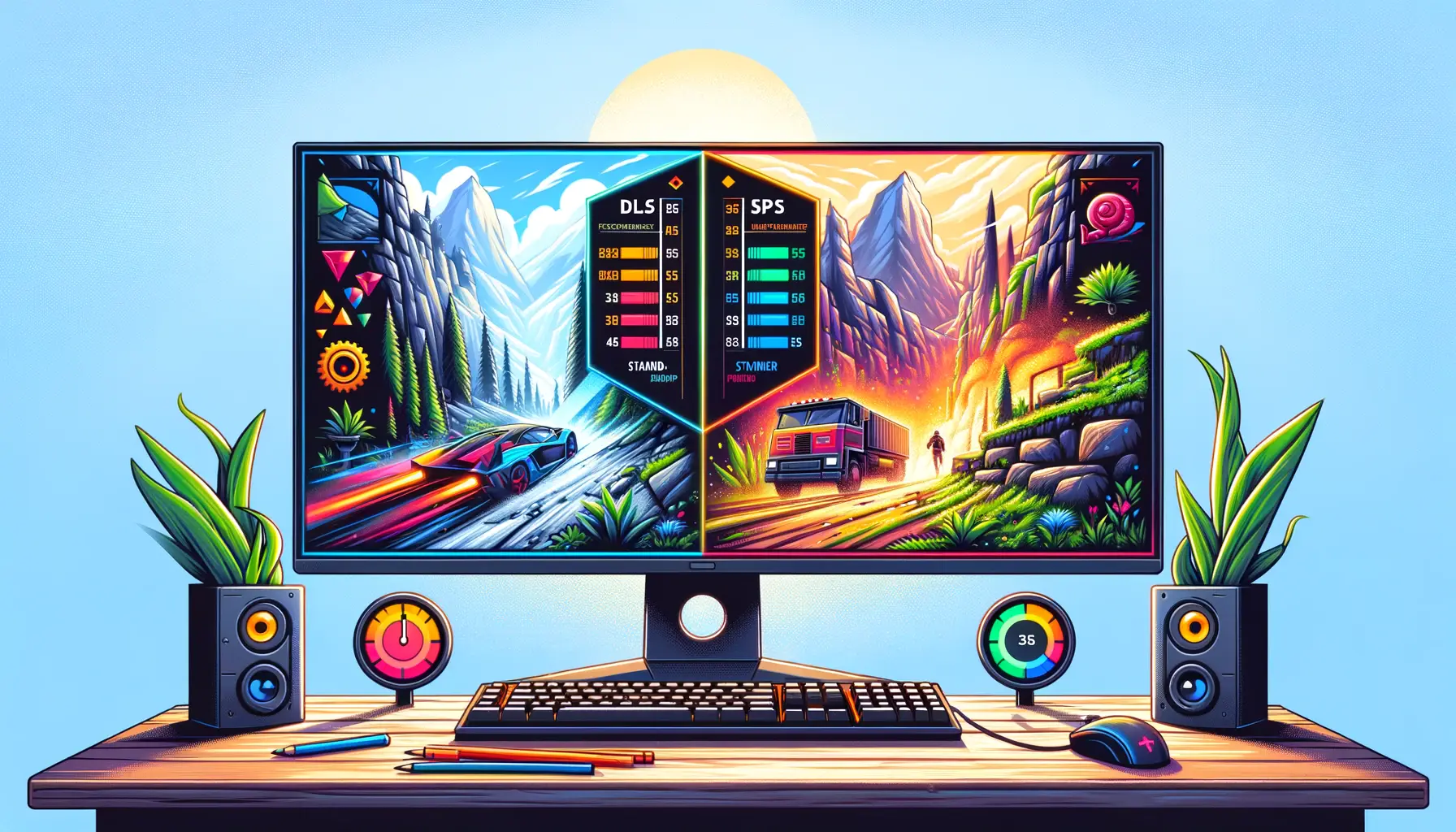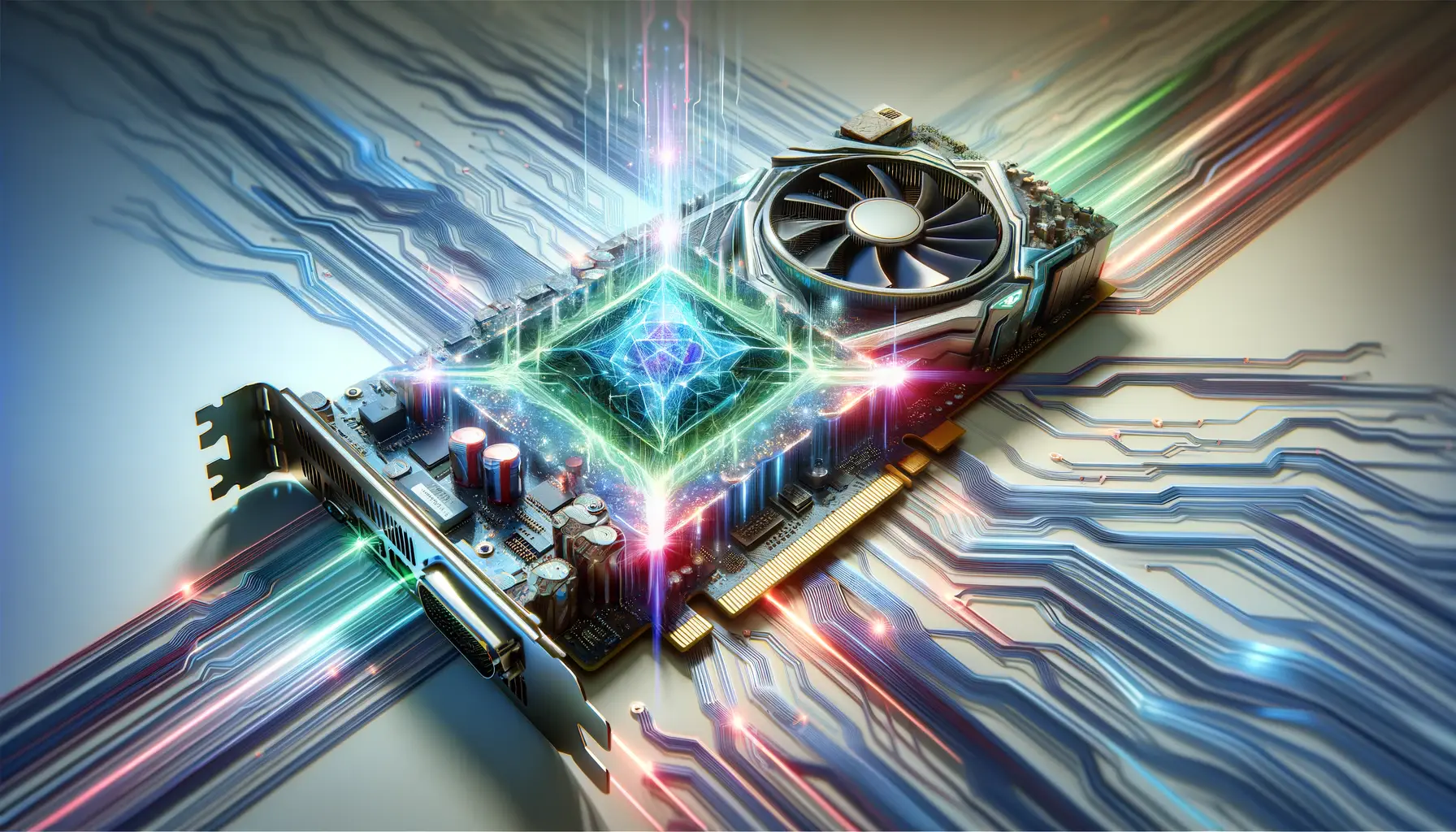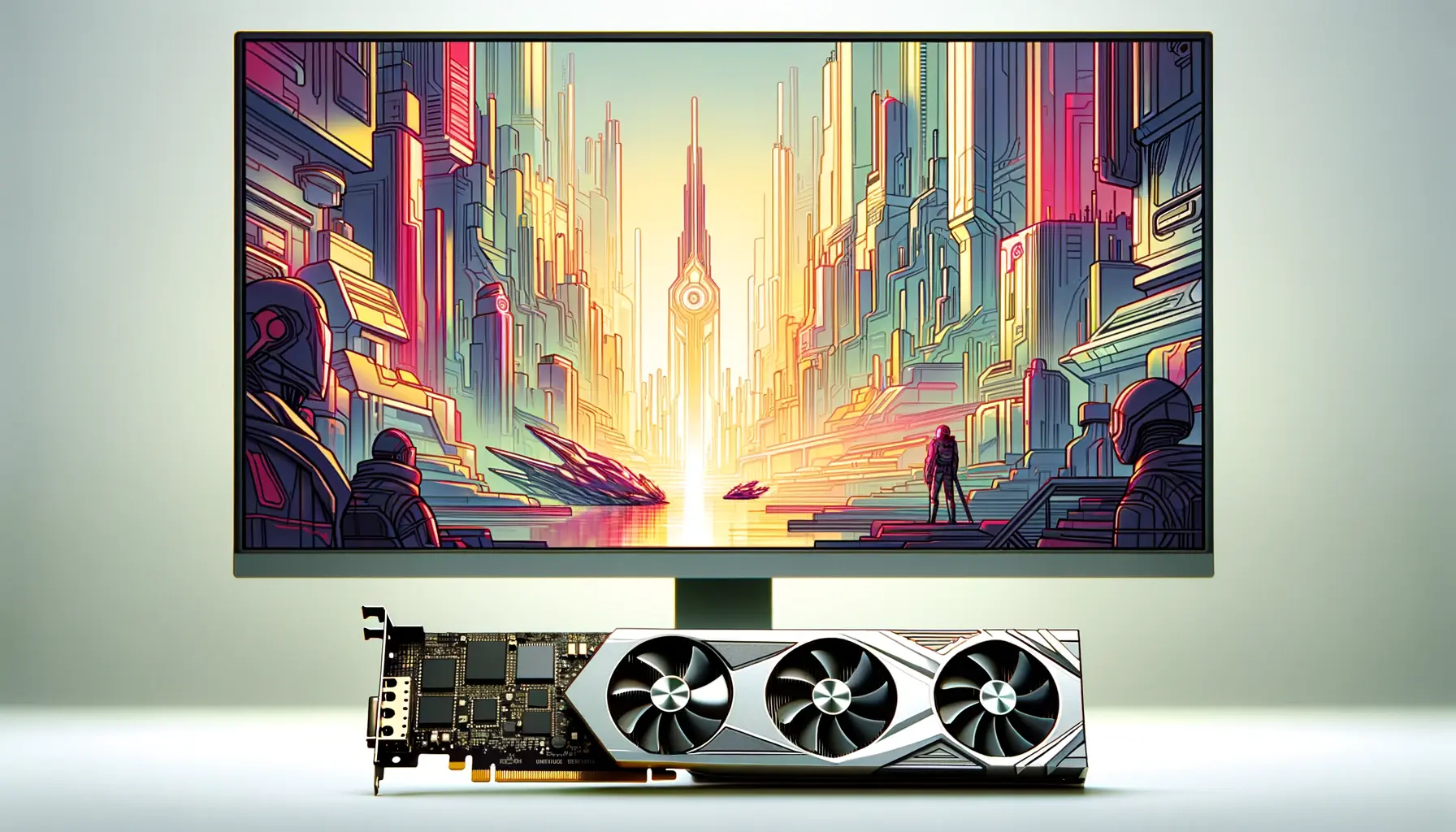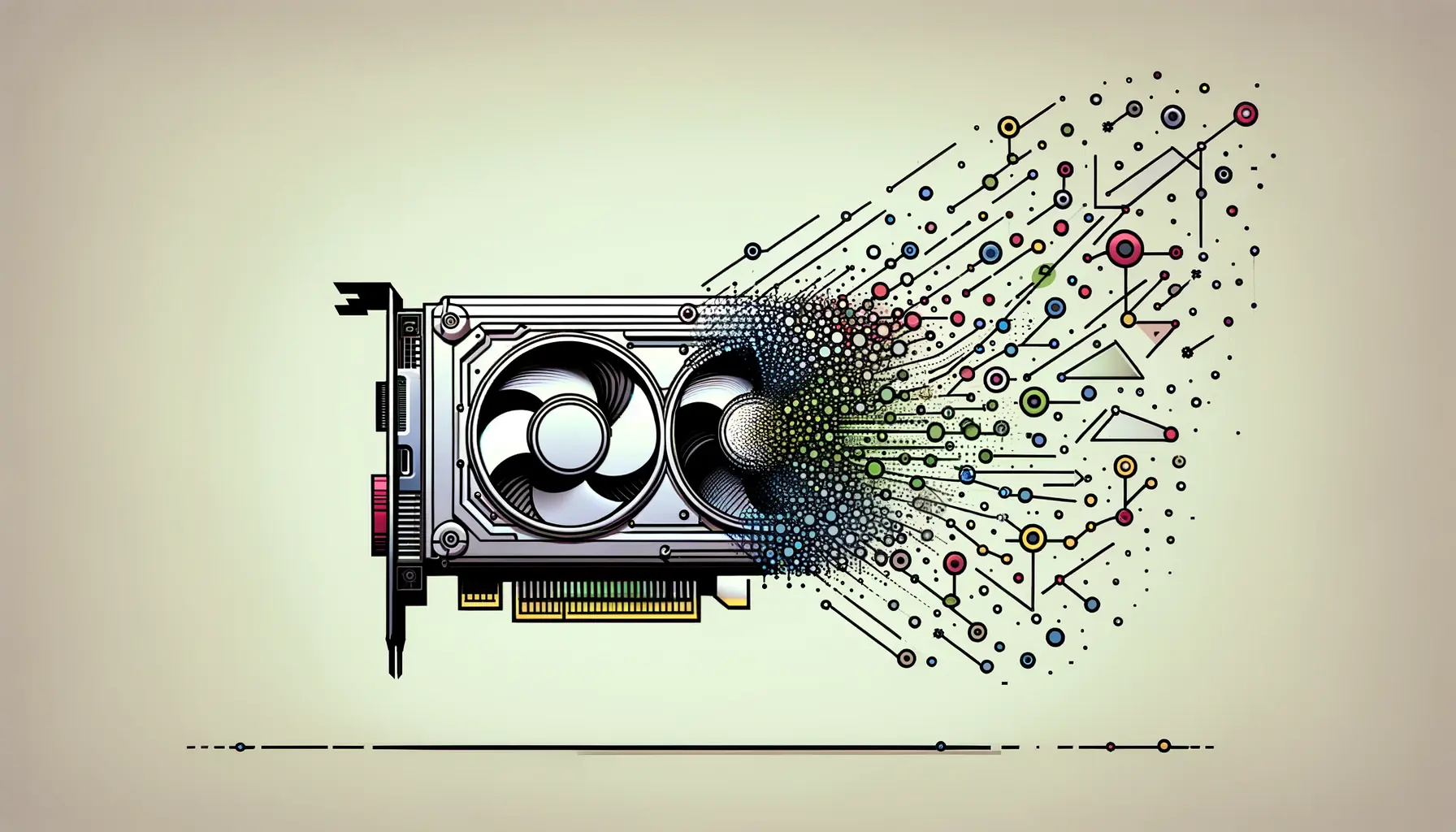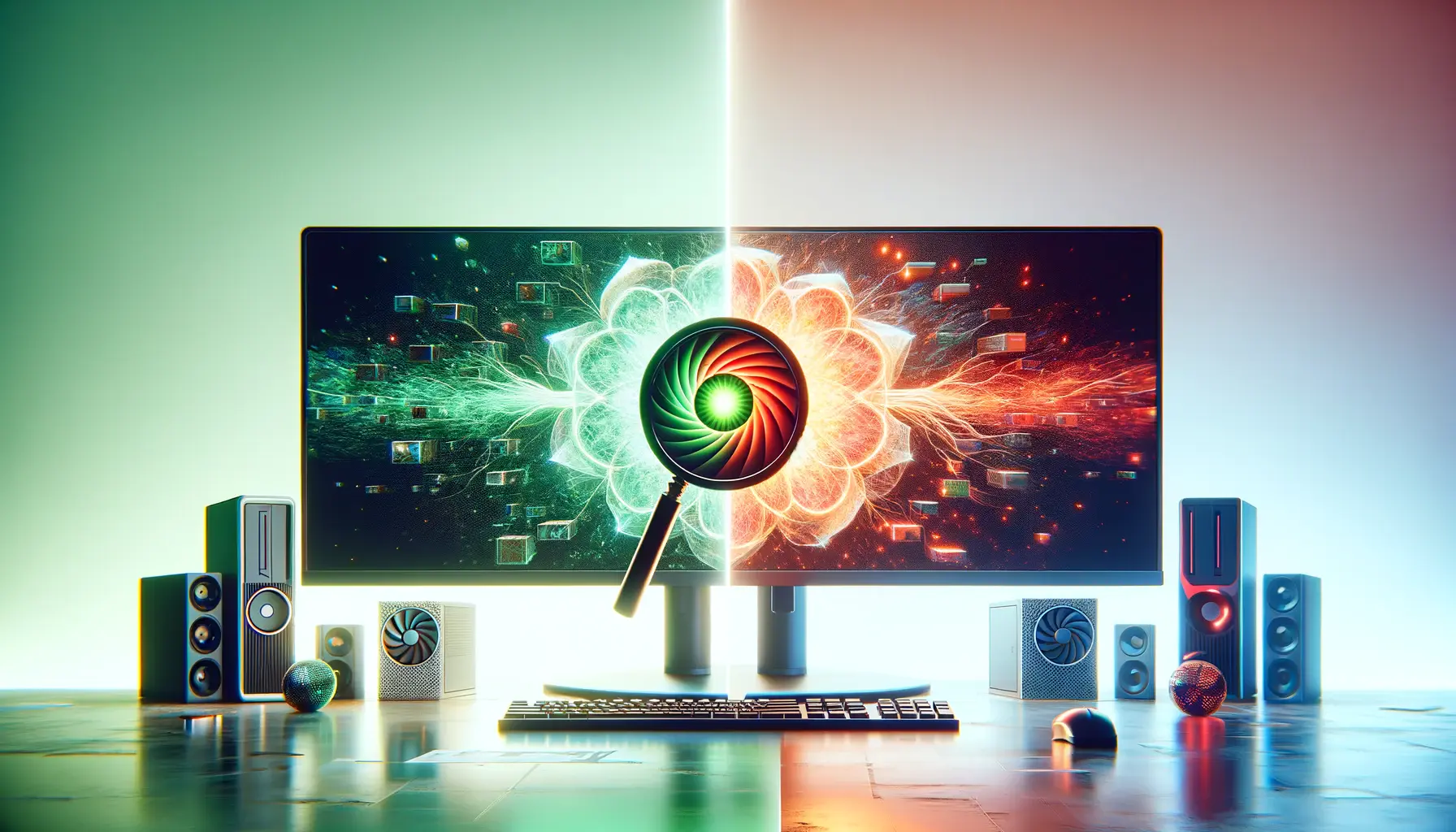The advent of Deep Learning Super Sampling (DLSS) 3 by NVIDIA heralds a new era in gaming and graphics technology, promising unprecedented performance improvements and visual fidelity.
This cutting-edge technology utilizes artificial intelligence to upscale images in real-time, allowing for smoother frame rates and higher resolutions without the traditional computational costs.
However, the implementation of DLSS 3 is not without its challenges, which span technical, compatibility, and industry adoption issues.
DLSS 3, as the latest iteration, builds on its predecessors’ foundations by introducing frame generation alongside super sampling.
This innovation aims to bridge the gap between rendering speed and visual quality, a perennial challenge in graphics processing.
However, the complexity of integrating DLSS 3 into existing systems and games presents a multifaceted challenge for developers and hardware manufacturers alike.
- Understanding DLSS 3 and Its Innovations
- Compatibility Concerns with DLSS 3
- Industry Adoption and Developer Support
- Optimizing Performance and Quality
- Future Directions and Innovations
- Addressing User Concerns and Feedback
- Enhancing Game Development with DLSS 3
- Embracing the Future with DLSS 3
- DLSS 3: Frequently Asked Questions
Understanding DLSS 3 and Its Innovations
At its core, DLSS 3 leverages neural networks to predict and generate high-quality frames from lower-resolution images.
This process, known as deep learning super sampling, has been refined over several iterations, with DLSS 3 introducing the novel concept of frame generation.
This technique not only upscales images but also creates intermediate frames, effectively doubling the perceived frame rate and enhancing fluidity in motion.
The technology’s reliance on AI and machine learning algorithms means that it requires substantial computational resources, specifically Tensor Cores found in NVIDIA’s RTX series GPUs.
This dependency underscores the first major challenge: hardware limitations.
For gamers and professionals without the latest GPU models, the benefits of DLSS 3 remain out of reach, highlighting a divide between hardware capabilities and software advancements.
Technical Hurdles in Implementation
Implementing DLSS 3 into a game or application is a complex process that involves deep integration with the rendering pipeline.
Developers must work closely with NVIDIA’s tools and libraries, adapting their code to accommodate the DLSS framework.
This integration often requires significant adjustments to ensure compatibility, particularly with custom engines or older titles not originally designed with DLSS in mind.
Moreover, the AI models that power DLSS 3 need to be trained on a per-game basis, a time-consuming and resource-intensive process.
This training ensures that the neural network can accurately predict and generate frames that match the game’s visual style and dynamics.
However, this bespoke approach adds a layer of complexity to the development process, potentially delaying game releases or updates.
DLSS 3’s frame generation technology marks a significant leap forward in graphics rendering, promising smoother gameplay and higher frame rates. However, its implementation requires cutting-edge hardware and substantial development resources.
Compatibility Concerns with DLSS 3
The promise of DLSS 3 extends beyond mere performance improvements; it aims to redefine visual fidelity and gaming experiences.
However, achieving widespread adoption is hampered by compatibility concerns that affect both hardware and software ecosystems.
These concerns not only influence user experience but also the broader acceptance of DLSS 3 technology in the gaming industry.
Hardware Compatibility Issues
One of the primary barriers to DLSS 3 adoption is the requirement for specific NVIDIA RTX GPUs.
This hardware specificity means that a significant portion of the gaming community, especially those with older or non-NVIDIA graphics cards, cannot benefit from DLSS 3 enhancements.
The situation presents a list of compatibility issues:
- Limited access for users without RTX series GPUs, creating a divide in the gaming community.
- Increased financial burden on gamers who need to upgrade their hardware to utilize DLSS 3.
- Potential market fragmentation, with game developers having to choose between catering to the latest technology or ensuring broader accessibility.
Software Integration Challenges
Beyond hardware, integrating DLSS 3 into games and applications poses its own set of challenges.
The technology’s advanced nature requires developers to navigate a complex landscape of software compatibility issues:
- Updating game engines to support DLSS 3, which may require significant redevelopment for older titles.
- Ensuring that DLSS 3 implementations do not conflict with other in-game visual effects and processing techniques.
- Adapting user interfaces and HUD elements to work seamlessly with dynamically generated frames, avoiding visual artifacts or inconsistencies.
The path to DLSS 3 adoption is fraught with compatibility hurdles, both in terms of hardware requirements and software integration efforts. Overcoming these challenges is crucial for realizing the full potential of this groundbreaking technology.
Industry Adoption and Developer Support
The successful implementation of DLSS 3 technology not only hinges on overcoming technical and compatibility challenges but also relies heavily on its adoption across the gaming and software development industries.
Garnering widespread support from developers is crucial for DLSS 3 to become a standard in future gaming experiences.
However, this endeavor faces several obstacles that need to be addressed.
Encouraging Developer Adoption
For DLSS 3 to achieve its potential, NVIDIA must ensure that developers are willing and able to integrate this technology into their games.
This requires a concerted effort to provide support and incentives for developers:
- Comprehensive documentation and easy-to-use SDKs are essential for lowering the barrier to entry for game developers.
- Training and support services can help developers understand how to best implement DLSS 3 in their projects.
- Financial and marketing incentives may encourage developers to adopt DLSS 3, showcasing its benefits to a wider audience.
Building a Collaborative Ecosystem
Beyond individual developer support, fostering a collaborative ecosystem around DLSS 3 technology is vital for its long-term success.
This involves creating a community where developers can share insights, optimizations, and best practices:
- Online forums and developer conferences can facilitate the exchange of ideas and experiences related to DLSS 3.
- Open-source projects and collaborations may lead to innovative uses of DLSS 3, expanding its applicability beyond traditional gaming.
- Success stories and case studies highlighting the positive impact of DLSS 3 on game performance and visual quality can serve as powerful testimonials to encourage further adoption.
The journey towards widespread industry adoption of DLSS 3 is a collaborative effort that requires support, resources, and a shared vision among NVIDIA, game developers, and the broader gaming community.
Optimizing Performance and Quality
DLSS 3’s promise of enhanced performance and superior image quality is a significant draw for gamers and developers alike.
Achieving the optimal balance between these two aspects is crucial for the technology’s success.
This balance requires careful consideration of various factors to ensure that DLSS 3 delivers on its potential without compromising on visual fidelity or gaming experience.
Performance Enhancements with DLSS 3
The introduction of DLSS 3 has set new benchmarks in gaming performance, offering significant frame rate improvements while maintaining, and in some cases improving, image quality.
To fully leverage these performance enhancements, several strategies can be employed:
- Dynamic resolution scaling allows DLSS 3 to adjust the base resolution in real-time based on performance needs, ensuring smooth gameplay even in demanding scenes.
- Customizable quality settings within DLSS 3 provide users with the flexibility to prioritize frame rates or image quality according to their preferences.
- Integration with other NVIDIA technologies, such as Reflex, enhances responsiveness and reduces latency, further improving the gaming experience.
Maintaining Visual Quality
While performance improvements are important, they should not come at the cost of visual quality.
DLSS 3 employs advanced AI algorithms to upscale images, but maintaining the original artistic vision and detail of games is paramount:
- Continuous learning and model updates are essential for DLSS 3 to adapt to new games and graphical styles, ensuring high-quality upscaling across a wide range of titles.
- User feedback plays a crucial role in refining DLSS 3’s algorithms, helping to identify areas where visual quality can be improved.
- Collaboration with game developers ensures that DLSS 3 integrates seamlessly with game engines and graphics settings, preserving the intended visual experience.
Optimizing for both performance and quality is a delicate balance that DLSS 3 aims to achieve through advanced AI, customizable settings, and ongoing improvements based on user and developer feedback.
Future Directions and Innovations
The development and implementation of DLSS 3 are not the culmination but rather a step in the ongoing evolution of rendering technologies.
As we look to the future, the potential for further innovations within the DLSS framework is vast.
These future directions not only promise to enhance gaming experiences but also to revolutionize other areas of visual computing.
Expanding DLSS Beyond Gaming
While DLSS 3 has made significant strides in gaming, its underlying technology has the potential to impact other areas of visual computing.
The application of DLSS-like technologies could extend to:
- Professional visualization and design, where enhanced image quality and performance can significantly improve workflows.
- Virtual and augmented reality, offering more immersive experiences through higher resolution and smoother frame rates.
- Video streaming and content creation, where upscaling can improve quality without the need for higher bandwidth.
Integrating with Emerging Technologies
The future of DLSS also involves its integration with other emerging technologies.
By combining DLSS 3 with advancements in graphics rendering, AI, and hardware, new possibilities emerge:
- Ray tracing and DLSS 3 can work together to deliver photorealistic graphics at high frame rates, making real-time ray tracing more accessible.
- Machine learning advancements could enable DLSS to offer even more intelligent upscaling, adapting to unique content types dynamically.
- Next-generation hardware, including GPUs and AI accelerators, will further enhance DLSS’s capabilities, reducing the performance overhead and improving efficiency.
The potential for DLSS technology extends far beyond current gaming applications, promising to influence a wide range of visual computing fields and integrate with emerging technologies for even greater performance and quality enhancements.
Addressing User Concerns and Feedback
The rollout and adoption of DLSS 3 have not been without user concerns and feedback.
As with any new technology, understanding and addressing these concerns is crucial for its continued improvement and acceptance.
Users’ experiences, critiques, and suggestions provide invaluable insights that can shape the future development of DLSS technology.
Common User Concerns with DLSS 3
Despite the advantages offered by DLSS 3, users have raised several concerns that impact their experience and perception of the technology:
- Artifacting and visual anomalies in certain games or scenes, which can detract from the immersive experience.
- Compatibility with a wide range of hardware, including older or non-NVIDIA GPUs, limiting access to the technology.
- Understanding and optimizing DLSS settings for the best balance of performance and quality, which can be daunting for less tech-savvy users.
Incorporating User Feedback for Improvement
NVIDIA and game developers play a pivotal role in addressing these concerns by incorporating user feedback into ongoing development efforts:
- Regular updates and patches can address artifacting issues, refine image quality, and expand compatibility with more titles and hardware configurations.
- Transparent communication about how DLSS works and guidance on optimizing settings can help users better understand and utilize the technology.
- Engaging with the community through forums, social media, and beta testing can foster a collaborative environment where feedback is actively sought and valued.
Ignoring user feedback and concerns can hinder the adoption and success of DLSS 3. Active engagement and continuous improvement are key to overcoming these challenges and ensuring the technology meets users’ expectations.
Enhancing Game Development with DLSS 3
DLSS 3 not only transforms the gaming experience for players but also revolutionizes the game development process.
By offering a tool that significantly boosts performance while maintaining high visual fidelity, NVIDIA’s technology provides developers with new avenues for creativity and innovation.
This final piece explores how DLSS 3 is set to change the game development landscape.
Revolutionizing Game Design and Visuals
The advent of DLSS 3 allows game designers to dream bigger, pushing the boundaries of what’s possible in terms of game visuals and design.
The implications for game development include:
- Higher graphical fidelity and performance enable more detailed and expansive game worlds, enhancing immersion and player experience.
- The ability to maintain smooth gameplay at higher resolutions opens up new possibilities for visual storytelling and artistic expression.
- Reduced hardware limitations mean developers can focus on creativity and innovation, rather than optimizing for performance at every turn.
Streamlining the Development Process
DLSS 3 not only enhances the end product but also streamlines the development process itself.
By alleviating some of the performance constraints, developers can benefit from:
- Faster iteration times, as less time is spent optimizing for performance, allowing for more focus on gameplay and aesthetics.
- Improved testing processes, with DLSS 3 ensuring that games run smoothly across a wider range of hardware configurations.
- Greater accessibility for indie developers, who can now achieve high-quality visuals without the need for extensive optimization resources.
DLSS 3 is more than just a technological advancement; it’s a catalyst for change in the game development industry, enabling more ambitious projects, streamlining development workflows, and democratizing access to high-quality game visuals.
Embracing the Future with DLSS 3
The journey of DLSS 3 from its inception to its current state is a testament to NVIDIA’s commitment to pushing the boundaries of gaming technology.
As we’ve explored the challenges, innovations, and potential of DLSS 3, it’s clear that this technology is not just an incremental update but a significant leap forward in the quest for photorealistic, high-performance gaming experiences.
The implications of DLSS 3 extend far beyond just improved frame rates or sharper images; they touch upon the very way games are designed, developed, and experienced by players around the world.
Overcoming Challenges for a Brighter Gaming Future
The path to widespread adoption of DLSS 3 is fraught with challenges, from hardware compatibility issues to the need for extensive developer support.
Yet, the potential rewards justify the effort required to overcome these obstacles.
By addressing the technical and compatibility concerns, NVIDIA and the gaming community can unlock the full potential of DLSS 3, ensuring that it becomes a cornerstone of future gaming experiences.
The Role of Community and Collaboration
Key to the success of DLSS 3 is the active involvement of the gaming and development communities.
Feedback, collaboration, and shared innovation are crucial for refining and enhancing DLSS 3, making it more accessible and effective for a wider range of users.
Through ongoing dialogue and cooperation, the ecosystem around DLSS 3 can continue to grow, driving further advancements in gaming technology.
DLSS 3: A Catalyst for Innovation
Looking ahead, DLSS 3 stands as a catalyst for innovation in game development and visual computing.
Its ability to deliver unprecedented performance and visual quality opens up new possibilities for game designers and developers, enabling more immersive and expansive gaming worlds.
As DLSS technology continues to evolve, we can expect to see even more groundbreaking applications that extend beyond gaming, further solidifying NVIDIA’s role as a leader in visual computing technology.
- The integration of DLSS 3 with emerging technologies like ray tracing and AI accelerators promises to further enhance gaming realism and performance.
- Expanding the application of DLSS technology to areas such as virtual reality, professional visualization, and content creation will broaden its impact, transforming a wide range of visual experiences.
- By fostering a collaborative ecosystem that values user feedback and developer innovation, DLSS 3 can achieve its full potential, benefiting the entire gaming community.
In conclusion, DLSS 3 represents a significant milestone in the pursuit of the ultimate gaming experience.
As NVIDIA and the gaming industry continue to address the challenges and harness the opportunities presented by DLSS 3, the future of gaming looks brighter than ever.
With its promise of high performance, stunning visuals, and broad applicability, DLSS 3 is poised to redefine our expectations of what is possible in digital entertainment.
DLSS 3: Frequently Asked Questions
Explore the most common inquiries about NVIDIA’s groundbreaking DLSS 3 technology, designed to enhance your gaming experience.
DLSS 3 combines AI-driven frame generation with super resolution and NVIDIA Reflex to boost frame rates while maintaining high image quality.
DLSS 3 is supported exclusively on NVIDIA GeForce RTX 40 Series GPUs, leveraging their advanced AI processing capabilities.
DLSS 3 enhances performance in supported titles, with developers needing to integrate the technology into their games for it to be effective.
By intelligently generating frames, DLSS 3 maintains or improves visual quality, making games look smoother without compromising detail.
DLSS 3 requires RTX 40 Series GPUs and is not backward compatible with older NVIDIA graphics cards due to its advanced AI processing needs.
DLSS 3 introduces frame generation technology, offering significant performance boosts beyond what was possible with earlier versions of DLSS.
DLSS 3 can be activated within the game’s graphics settings, allowing players to select from various performance and quality options.
Yes, several games support DLSS 3, including titles like Marvel’s Spider-Man Remastered and Microsoft Flight Simulator, with more to come.
